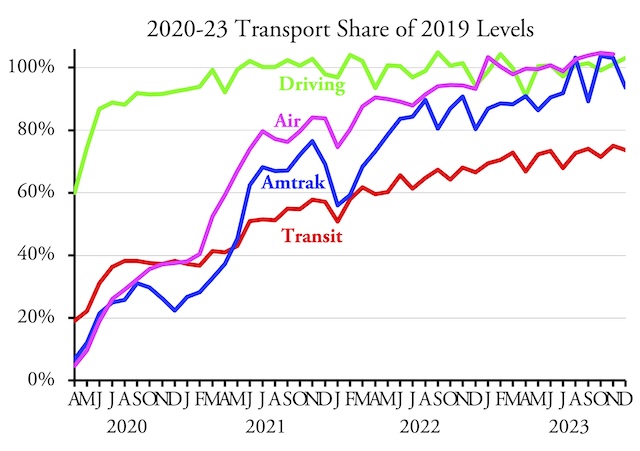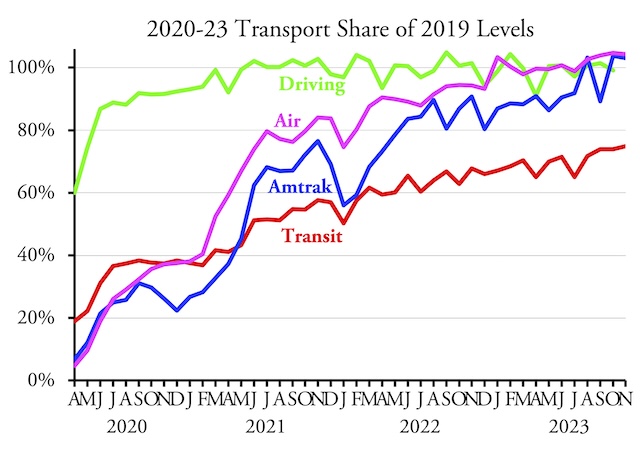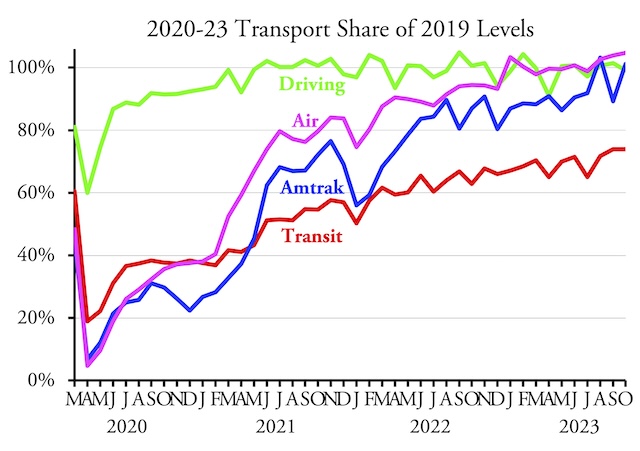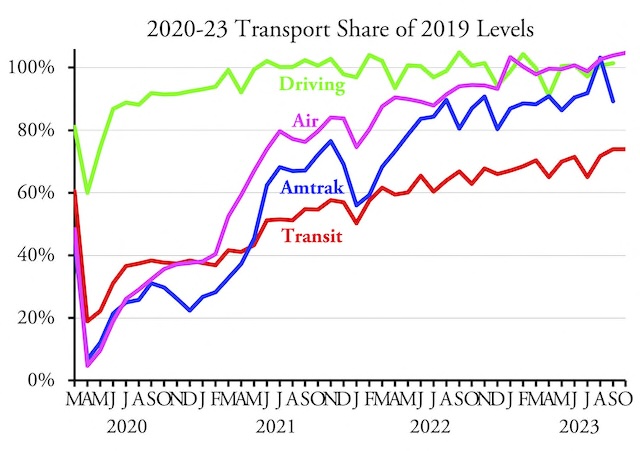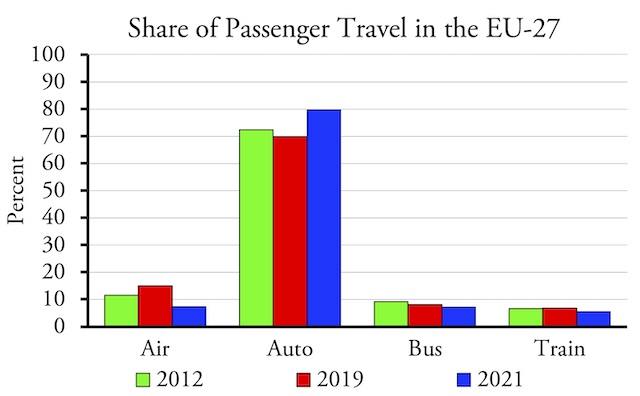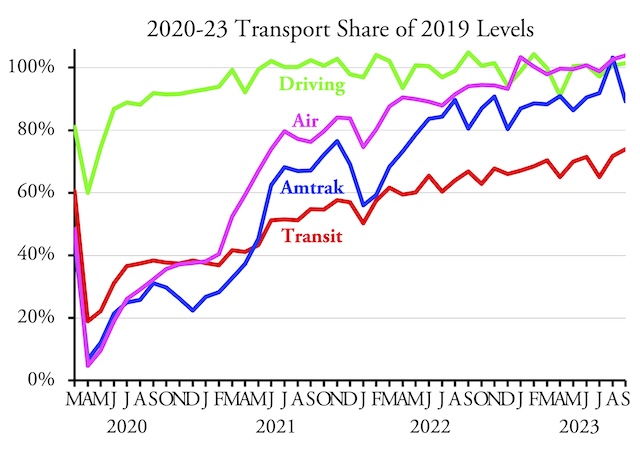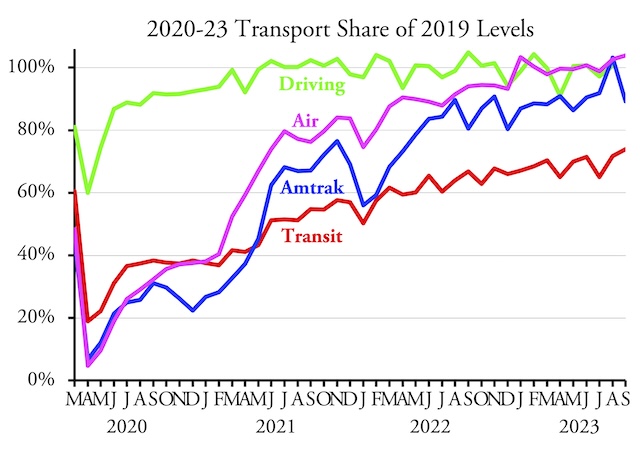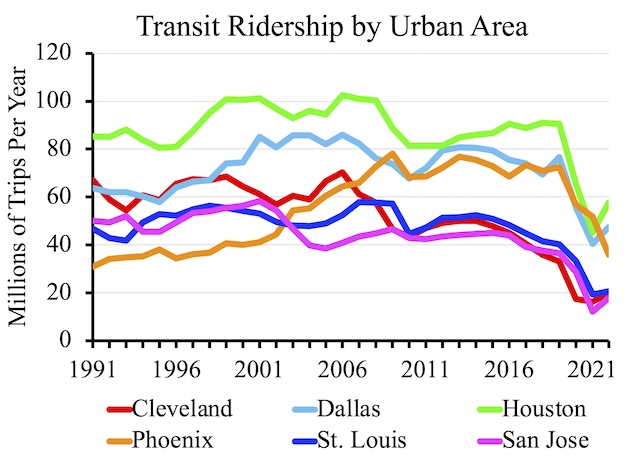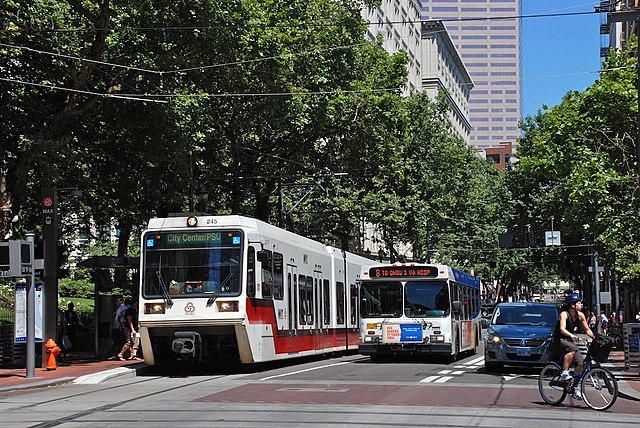U.S. residents drove 96.88 percent as many miles in December of 2023 as in the same month in 2019, according to estimates released yesterday by the Federal Highway Administration. Though this is down from 104.3 percent in November, driving has been hovering around 100 percent of 2019 levels all year.
In fact, the estimates indicate, Americans drove 100.1 percent as many miles in 2023 as they did in 2019 and 102.0 percent as many miles in 2023 as in 2022. I would judge that driving has completely recovered from the pandemic and is now growing at pre-pandemic levels. Decreases in rush-hour driving due to remote work are made up for by increases in non-rush-hour driving by remote workers running errands, going out for coffee, or attending meetings as well as by people moving from urban to rural areas or from some states to others. Continue reading

